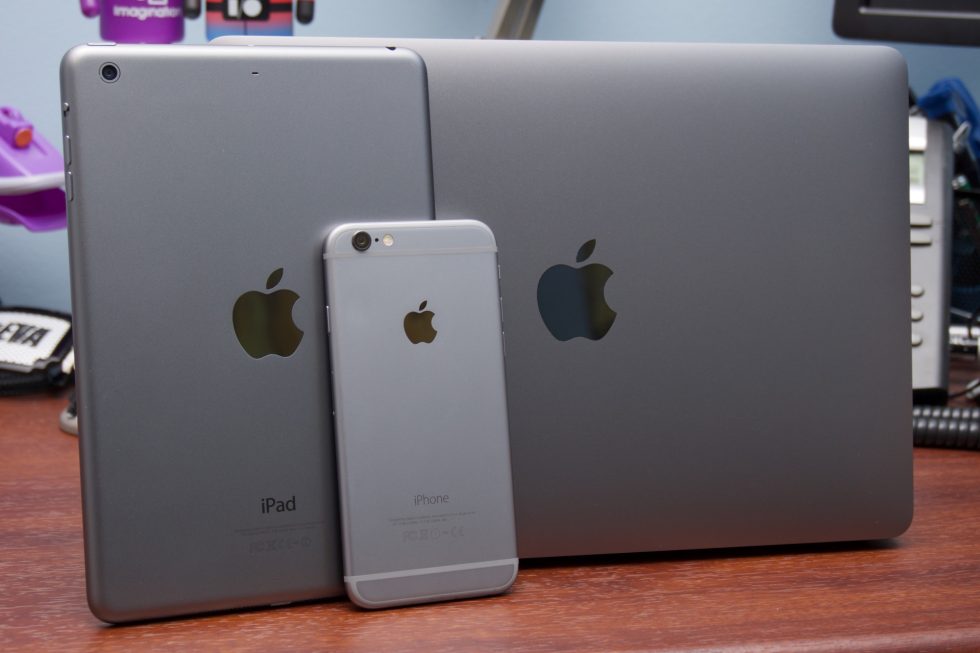
Apple has just released its earnings report for the second quarter of fiscal 2016, which runs from the beginning of January to the end of March. As CEO Tim Cook and CFO Luca Maestri warned in last quarter's earnings call, iPhone sales were down year-over-year for the first time since the product's launch in 2007. Since the iPhone accounts for around two-thirds of Apple's revenue, this means that Apple is also reporting its first year-over-year quarterly revenue decline since 2003, something CEO Tim Cook referred to as a "pause in [Apple's] growth." iPad and Mac sales are also down, though the Services and "Other products" categories ticked upward.
Apple made $10.5 billion in profit and $50.6 billion in revenue, compared to $13.6 billion in profit and $58 billion in revenue in Q1 of 2015. Its gross margin was 39.4 percent. These results beat the low end of Apple's guidance for the quarter, which predicted revenue between $50 billion and $53 billion and a profit margin between 39 and 40 percent.
The company predicts that the year-over-year quarterly decline will continue next quarter. Apple expects it will make between $41 and $43 billion in revenue in the third quarter of fiscal 2016 with profit margins between 37.5 and 38 percent. This is well below the $49.6 billion in revenue that Apple made in Q3 of 2015.
The Americas and China are still Apple's two biggest territories, and revenue was down in both. It declined around 10 percent in the Americas and a whopping 26 percent in China, a possible reflection of the country's slowing economy. The only territory with increased revenue for the quarter was Japan, which was up about 24 percent; Europe fell by about 5 percent and Asia Pacific fell by 25 percent.
Unit sales of the iPhone declined around 16 percent, from 61.2 million units last year to 51.19 million this year. Revenue declined by 18.42 percent from $40.28 billion to $32.86 billion, accounting for most of the revenue drop for the quarter overall. The decrease, which will almost certainly continue next quarter given Apple's revenue projections, may simply be a correction rather than the beginning of a trend. Demand for the iPhone 6 and 6 Plus was incredibly high throughout fiscal 2015, due in part to those devices' big screens. The 6S and 6S Plus add plenty of desirable features, but none that have the same impact on the user experience as a different screen.
If you want to talk about a trend, turn your attention to the iPad. Unit sales declined almost 19 percent, from 12.60 million units to 10.25 million units. Revenue also fell by 19 percent, from $5.43 billion to $4.41 billion. The iPad hasn't grown year-over-year since the first quarter of 2014, and the backslide has persisted despite the introduction of multiple refreshes for the iPad and iPad Mini and the introduction of the iPad Pro. The iPad is still doing well when compared to other tablets, but so far none of Apple's efforts to improve sales have helped much.
The Mac is also down, albeit not as sharply. Unit sales fell 12 percent from 4.6 million units to 4.03 million units, and revenue fell 9 percent from $5.62 billion to $5.11 billion. The majority of the Mac lineup is around a year old at this point, including high-volume products like the MacBook Air and MacBook Pro. The Mac Pro is over three years old, and the Mac Mini is a year-and-a-half old. Demand may be down because buyers are waiting for new hardware, though the wider PC market is contracting at a similar rate despite a diverse range of new hardware.
Apple doesn't break out the unit sales or revenue numbers for any other products—the Apple Watch, Apple TV, iPod, Beats headphones, accessories, and all other hardware Apple sells falls into the Other Products category, which grew almost 30 percent from $1.69 billion to $2.19 billion. Apple CFO Luca Maestri attributed most of that growth to the Apple Watch.
Finally, Apple's Services category, which encompasses everything from software sales to App and iTunes Store revenue to Apple Music and iCloud subscriptions, grew 20 percent from $4.99 billion to $5.99 billion.
reader comments
203